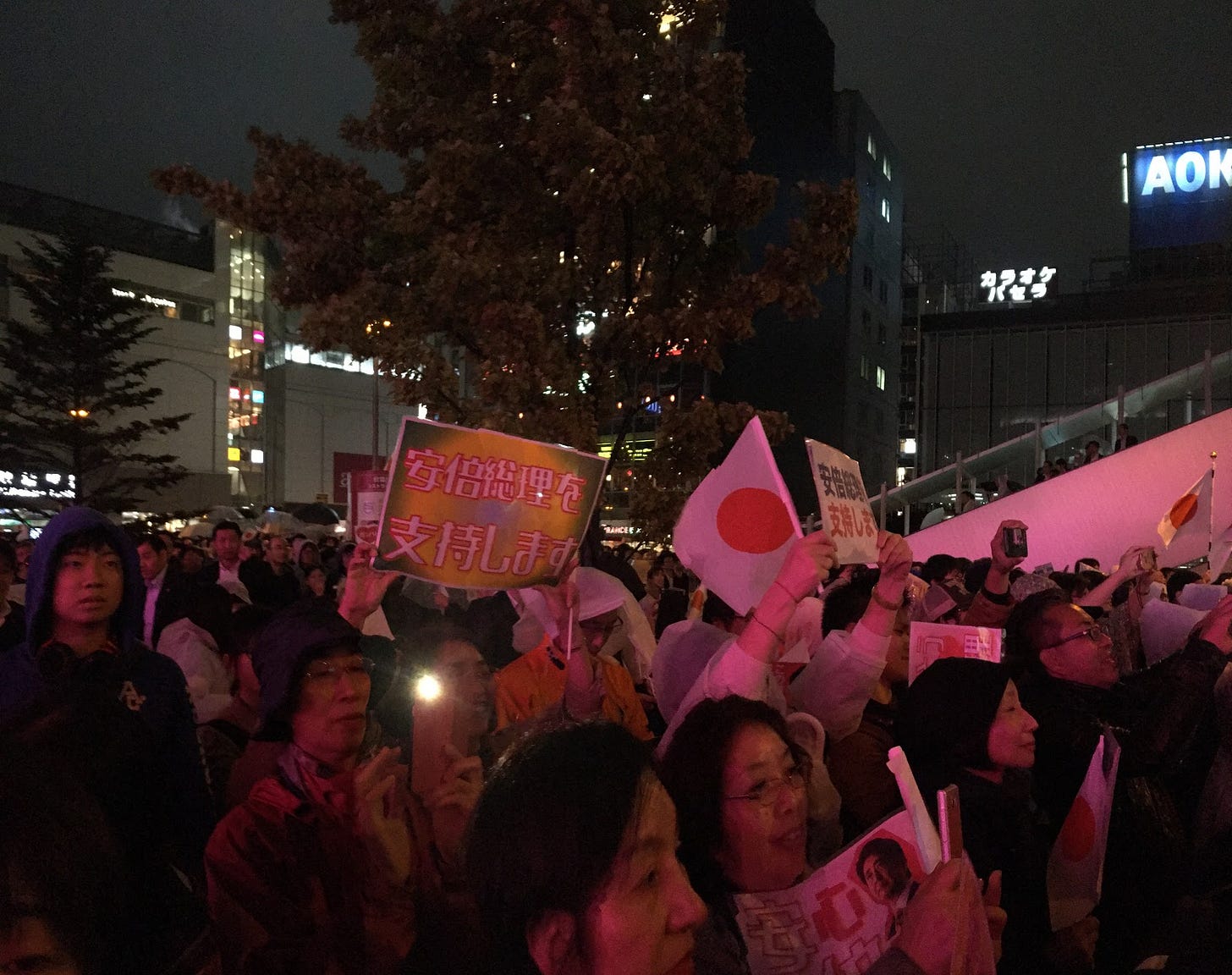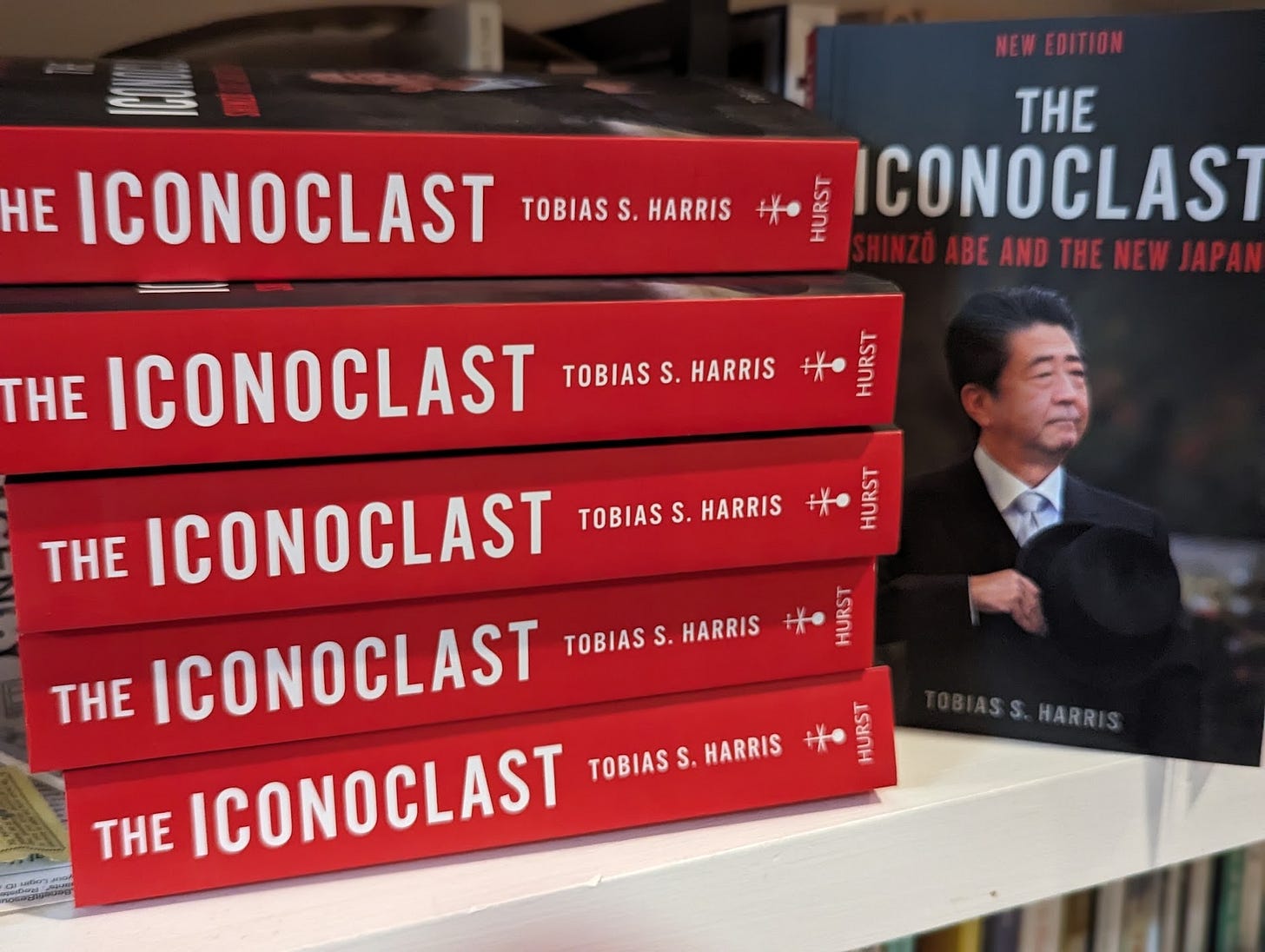On Sunday evening, I talked with Bloomberg’s Japan Ahead program about Japan’s political outlook.
The occasion for this conversation was the sense that Prime Minister Kishida Fumio is faltering and could be headed for the exit. The latest round of polls shows that the Kishida cabinet’s approval ratings have continued to slide. The cabinet has reached new lows in Asahi (25% approval/65% disapproval/-40 net); Mainichi (21/70/-49); Yomiuri (24/62/-38); Sankei (27.8/68.8/-41); Kyodo (28.3/56.7/-28.4); NHK (29/52/-23); and Jiji (21.3/53.3/-32). The latter four polls were conducted earlier in the month, suggesting that the decline is picking up speed.
There are virtually no bright spots in these polls. The Yomiuri poll is particularly grim, since it showed not only a twenty-four-point drop in net approval but is harder to dismiss as it is generally the most friendly to the government. The picture these polls paint is of an utter loss of public confidence in the prime minister’s leadership.In the Yomiuri poll, 52% said Kishida should stay until the end of his leadership term (and no longer); 33% say he should be replaced soon; only 11% say he should serve as long as possible. 66% disapprove of the government’s new stimulus package. 61% disapprove of the tax rebate that is part of the package (44% of whom say they disapprove because they see it as electioneering). Only 18% think the government’s policies will deliver wage increases.
What is striking to me is that by crashing below 30% approval in virtually every poll, Kishida has differentiated himself from the late Abe Shinzō — and not in a good way. Even in his worst moments, Abe never really fell below 30%, and when he reached lows, he never stayed there long. Abe arguably had a political base that created a solid floor beneath his government. He enjoyed genuine support from roughly a third of the country, voters who wanted him to succeed and rallied around him when was in trouble.1
Who is Kishida’s constituency? Kishida has leaned on his moderate image and his ability to listen, but that’s clearly not enough. He is likely to constrained by the LDP’s right — and by the policies he inherited from Abe — to build a reservoir of support among independents, but he also has not inherited Abe’s fervent supporters on the right.
To be sure, I do not necessarily agree with Richard Katz that Kishida’s exit is imminent. The LDP bosses would prefer not to have to remove a prime minister — which does the party no favors — and no one seems prepared to launch a coup to unseat him, a la Katō Kōichi versus Mori in 2000.2 But Kishida’s margin for error is shrinking, and if he cannot improve his numbers to a point at which he can call a snap election and claim a new mandate, the prospects for another three-year term as LDP president look grim. It is hard to believe that the LDP would simply reelect him without a serious leadership contest.
Of course, there is another possibility. Kishida’s trajectory could end up looking like Fukuda Yasuo’s, who followed Abe in 2007 and offered a more moderate image compared to him but struggled to connect with the public and saw his approval ratings plunge before he threw up his hands and resigned in September 2008.
Kishida may still have some time, but the clock is ticking, and it is hard to see how he can convince the public — and his party — that he should stay around.
Bluesky codes
As some of you may have noticed, I’ve stopped posting on Twitter, for obvious reasons.
While I am posting less than before, I have started to do some Japanese politics posting at Bluesky (tobiasharris.bsky.social). I have some invite codes to share. Email if interested.
Book giveaway!
The expanded paperback edition of The Iconoclast is now on sale outside of the United States. From 20 November to 3 December, you can buy it directly from Hurst Publishers for 50% off as part of their Black Friday sale.
But as a thank you to my readers, I will be giving away a signed copy of the paperback to one subscriber. To enter the giveaway, please send an email with subject line “Iconoclast giveaway” to bookgiveaway@observingjapan.com. I will accept entries until December 15, at which point I will draw a winner.
Pledge your support
As always, many thanks to those who have already signed up to read these posts. At the moment, I do not plan to shift to a subscription model. However, Substack has introduced the option of “pledging,” indicating a willingness to subscribe if I were to shift to a subscription plan. In the event of a snap election, I may charge for electoral analysis and keep other posts publicly available.
If you would be willing to pay for a subscription, it would be helpful if you could press the “pledge your support” button on the upper right of the page. I will not turn on subscriptions without notice, but I would like to gauge how much interest there might be.
And, not unlike some American political figures, I think the more he attracted the enmity of the left-of-center media and intellectuals, the more his base clung to him.






Hello Tobias,
I'm Thomas and I've been following some of your articles (and The Iconoclast) as they help me understand the political climate in Japan.
I've been researching Japanese foreign policy for a while now since I entered university in 2021. I watched PM Kishida get elected and have been analyzing his policies whenever possible;
For my graduation paper (TCC here in Brazil) I want to analyze Japanese foreign policy under Kishida, making comparisons with previous policies and the premiers themselves;
My idea is to develop a work that talks about a "Kishida Doctrine", like the Abe Doctrine, Koizumi Doctrine, Nakasone, Fukuda, Yoshida, etc. Do you think that makes sense? Do you have any material you could recommend?
Thank you for your attention and reply!